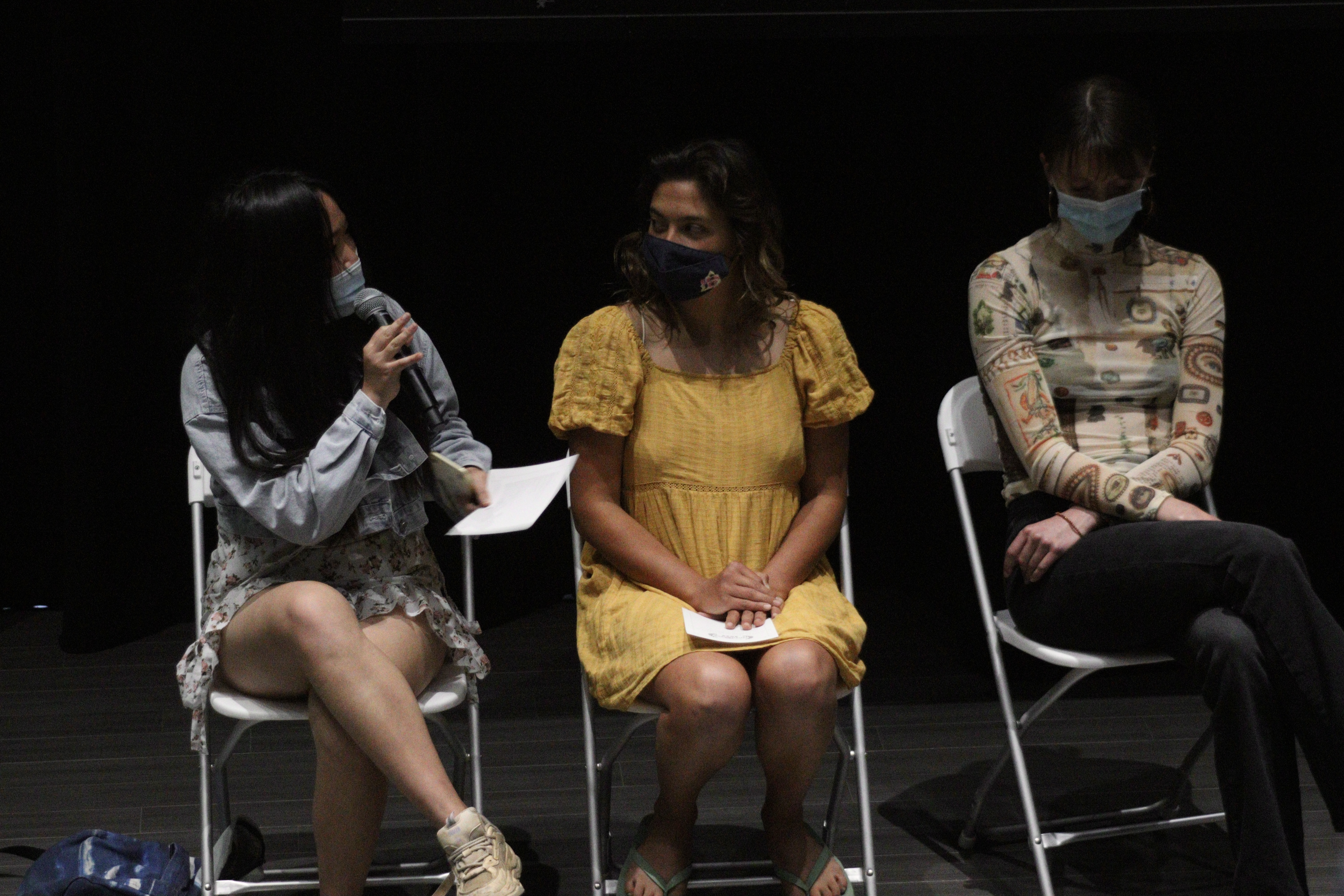If you spent last night traveling across continents, diving under the ocean, examining the human psyche and immersing yourself in a variety of cultural heritages — you must have been with me at Stanford’s Poetry Into Film Festival.
After a two-year hiatus, the Stanford Creative Writing program resumed its funding of this intersectional program. The task for all entries was the same: create a short film of up to 10 minutes inspired by a poem of their choice. The results, on the other hand, were vastly unique, showcasing the depth and brilliance of Stanford’s artistic community. Gathered together in Oshman Hall at McMurtry Building, English Lecturer Kai Carlson-Wee gave the audience a warm welcome and made sure to quote Walt Whitman to set the tone for the night before starting the screenings.
The students watched the program respectfully and attentively, seeing a different interpretation of color-grading, editing styles and voiceovers with each short film. The first three films pondered the tribulations of teenage romance in a technological world (“Google, Locker Rooms and Anticipatory Nostalgia” by Anastasia Sotiropoulos ’24), the ways in which grief can change our affinity with art (“Days Without Janisa” by Ijeoma Alozie ’24, Stara D’Haiti ’24 and Laura Futamura ’24) and the complex relationship between girlhood and gender identity (“Blacksmith” by Kiara T. Dunbar ’22).
What struck me most were the many ways these filmmakers refused to be placed in the box of a singular medium constraint. Although all films already took on the daunting task of combining written poetry with visual expression, many of the films took it a step further and tied in other artistic elements. Four of the films — “Psalm” by Dongming Zhang ’22 and Regina Kong ’22, “Roots” by Carissa Cheng ’25, “The Artist’s Exchange” by Kealia Victorino ’25 and “The House” by Isabelle Edgar ’24 — implemented forms of interpretive dance to breathe life into poetry. Other films exemplified the diverse range of cultural identities, with both “La Cannonière” by Justin Portela ’22 and Peyton Hulsey ’23 and “One Night on the Prison Courtyard” by Muhammad Khattak ’22 showcasing bilingual translations of their chosen poetry.
A short Q&A followed the screening, with the filmmakers proudly sitting together at the front of the stage. Each student had a unique process of converting their chosen poem into film. Edgar, whose film showcased a beautifully choreographed dance, explained that the idea for her film came from pairing dance with spoken word. She confessed that “as a dancer, it felt great to move with the breath of the poem.” Khattak explained that the creative spark for his film came less from either the poem or the visual media, but was instead primarily inspired by a particularly haunting song she found — one that ended up being the background music for the film.
There were, of course, other students who began with the poem in mind first. Justin Portela ’22 said he started with the poem and chose to work with it because he always envisioned it as a three-story act when he read it. Shaina Kaye ’24 told the audience that when she read her chosen poem, “it became so clear that the poem was one that needed to be read aloud.”
Many students articulated the difficulties that accompanied combining written art with a visual medium. Dunbar said that the “hardest part was to make sure the visual language and the written language were in conversation with each other.” Still, most of them acknowledged the endless creative possibilities that came with translating words from a page onto the screen and expressed the fun and fulfillment they experienced throughout the process.
There was an undeniable air of anticipation in the room for both viewers and filmmakers, waiting for the cash-prize winners of the festival to be announced at the very end of the evening. Four prizes were awarded: the Special Jury Prize went to Victorino’s “The Artist’s Exchange,” third place was won by Portela and Hulsey’s “La Cannonière,” second place was won by Edgar’s “The House” and first place went to Skya Theobald ’24 and Chaidie Petris’s ’24 “Blue Handprints.” The selection process was conducted by Creative Writing Lecturer Mark Labowskie, who made sure to remind the audience that all entries were deserving of a prize, and thanked all the filmmakers for their courageous vulnerability in creating such personal art.
All in all, the night was a wonderful exhibition of the necessity of poetry and the many ways in which this art form is being re-envisioned through a modern lens. If there’s one thing to take away from the night, it’s that Stanford’s art students are a powerfully creative group with much to give to this world — despite the “lack of love” that the community receives on campus, as Carlson-Wee jokingly said. With a majority of these students aspiring to be future screenwriters, poets and directors, I’m sure the artistic world will be in good hands as these students continue to expand their creative horizons.
Editor’s Note: This article is a review and contains subjective opinions, thoughts and critiques.
